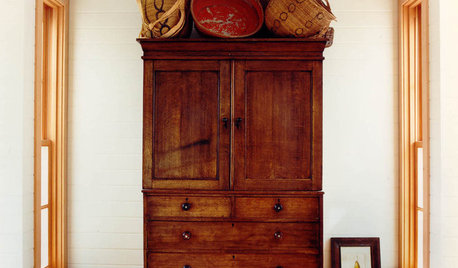Ignorant grafting questions
ltilton
11 years ago
Related Stories

GREEN DECORATING8 Questions to Help You See Through Green Hype
With the ecofriendly bandwagon picking up some dubious passengers, here's how to tell truly green products and services from the imposters
Full Story
WORKING WITH PROS12 Questions Your Interior Designer Should Ask You
The best decorators aren’t dictators — and they’re not mind readers either. To understand your tastes, they need this essential info
Full Story
REMODELING GUIDESConsidering a Fixer-Upper? 15 Questions to Ask First
Learn about the hidden costs and treasures of older homes to avoid budget surprises and accidentally tossing valuable features
Full Story
CONTRACTOR TIPSBuilding Permits: 10 Critical Code Requirements for Every Project
In Part 3 of our series examining the building permit process, we highlight 10 code requirements you should never ignore
Full Story
DECORATING GUIDESA Beginner's Mini Guide to Buying Antiques
Experience the thrill of the hunt without ignorance ruining the spoils, with this guide to antiquing for novice buyers
Full Story
COLORPaint-Picking Help and Secrets From a Color Expert
Advice for wall and trim colors, what to always do before committing and the one paint feature you should completely ignore
Full Story
HOUSEKEEPING10 Problems Your House May Be Trying to Show You
Ignore some of these signs and you may end up with major issues. We tell you which are normal and which are cause for concern
Full Story
DECLUTTERINGClutter vs. Keepers: A Guide to New Year's Purging
Simple questions to get in touch with your clutter comfort level — and figure out what needs to go
Full Story
MOST POPULAR10 Things to Ask Your Contractor Before You Start Your Project
Ask these questions before signing with a contractor for better communication and fewer surprises along the way
Full Story
KITCHEN DESIGNA Cook’s 6 Tips for Buying Kitchen Appliances
An avid home chef answers tricky questions about choosing the right oven, stovetop, vent hood and more
Full Story



marknmt
ltiltonOriginal Author
Related Professionals
Beavercreek Landscape Architects & Landscape Designers · Glassmanor Landscape Architects & Landscape Designers · Peabody Landscape Contractors · Springfield Landscape Contractors · Wakefield Landscape Contractors · Woburn Landscape Contractors · Edmond Landscape Contractors · Brookfield Landscape Contractors · Lebanon Landscape Contractors · Lehigh Acres Landscape Contractors · Panama City Beach Landscape Contractors · Seven Hills Landscape Contractors · Vashon Landscape Contractors · Wailuku Landscape Contractors · Norridge Landscape Contractorsalan haigh
marknmt
ltiltonOriginal Author
alan haigh
marknmt
ltiltonOriginal Author
alan haigh
quillfred
ltiltonOriginal Author
marknmt
ltiltonOriginal Author